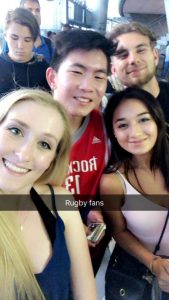In Paris, I have noticed that many of the older buildings have been repurposed to house museum collections. The Louvre, for example, was originally built in the twelfth century as a fortress and was later converted into one of the main royal palaces for the royal family and their court before becoming the art museum we know it to be. For our last excursion, we took a trip to the Musée de Santé des Armées, a museum devoted to medical military technology. This museum, like the Musée Arts et Métiers, was once a convent. The first exhibition in the museum explains the history of the building, and there is also a chapel in the center that is still actively used. In fact, while we were there an altar boy was in training.











